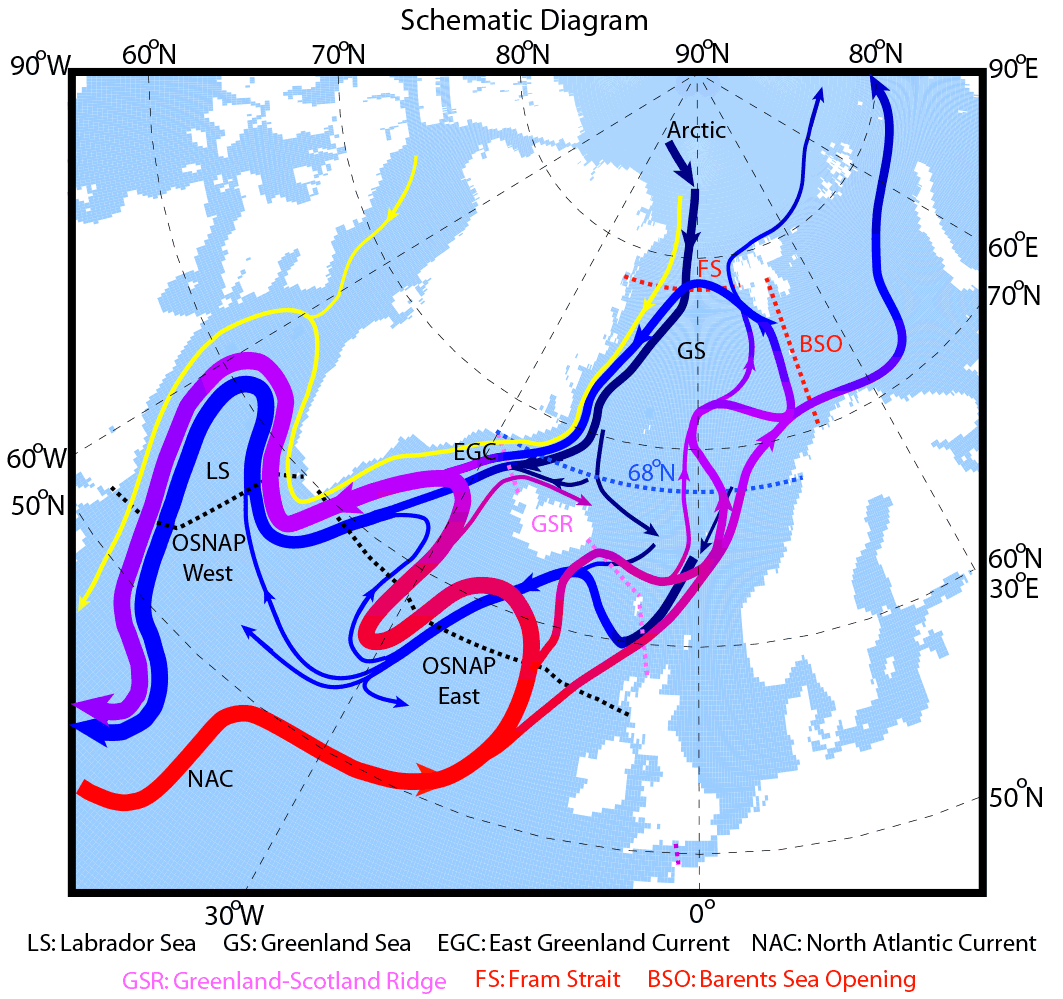June 16th, 2021
Key Findings
- Robust diagnostic calculations are conducted using a high-resolution GFDL global coupled climate model (CM2.5) in conjunction with observed hydrographic climatology to reveal a holistic picture of the long-term mean Atlantic Meridional Overturning Circulation (AMOC) structure at northern high latitudes over the past several decades.
- The deep AMOC branch across the Fram Strait/Barents Sea Opening (i.e., the Arctic outflow) provides the densest source water to the long-term mean AMOC. The Arctic Ocean, not the Greenland Sea, is the northern terminus of the long-term mean AMOC.
- Open-ocean deep convection, in either the Labrador or Greenland Seas, contributes minimally to the long-term mean AMOC; hence, it may not be substantially weakened by a shutdown of open-ocean deep convection. Meanwhile, horizontal circulation contributes substantially to the maximum long-term mean northeastern subpolar AMOC.
Rong Zhang and Matthew Thomas. Communications Earth & Environment. DOI: 10.1038/s43247-021-00182-y
The Atlantic Meridional Overturning Circulation (AMOC) has profound impacts on many aspects of climate, including temperature and precipitation. How and why the AMOC changes remains a challenging issue. The Greenland Sea is often viewed as the northern terminus of the AMOC and it has been suggested that the shutdown of open-ocean deep convection in the Labrador or Greenland Seas would substantially weaken the AMOC. This study suggests that the Arctic Ocean, not the Greenland Sea, is the northern terminus of the mean AMOC. Open-ocean deep convection, in either the Labrador or Greenland Seas, contributes minimally to the mean AMOC, hence it may not be weakened substantially by a shutdown of open-ocean deep convection. Meanwhile, horizontal circulation contributes more than 40% to the maximum mean northeastern subpolar AMOC.
Unlike many other climate variables, there is no established long-term mean of directly observed AMOC over the past several decades to serve as a reference. It is difficult to know whether the current observed AMOC is different from its long-term mean state in a historical context. This study used a high-resolution global coupled climate model (GFDL’s CM2.5) in conjunction with the observed hydrographic climatology to provide a holistic picture of the long-term mean AMOC structure at northern high latitudes (a key region for AMOC changes) over the past several decades. The results show that the deep AMOC branch across the Arctic outflow provides the densest source water to the mean AMOC. The Arctic Ocean, not the Greenland Sea, is the northern terminus of the mean AMOC.
The long-term mean AMOC structure estimated by this study over the extratropical North Atlantic and the Arctic Mediterranean could be valuable for interpreting future observed AMOC changes, guiding modeling and observational efforts, and calibrating the AMOC mean state in climate models. This research improves our fundamental understanding of the long-term mean AMOC structure at northern high latitudes, which will be important for understanding historical changes and for improving climate modeling biases. Understanding the mechanisms for the AMOC will also help to predict future AMOC changes and associated climatic, ecological, and economic impacts.



